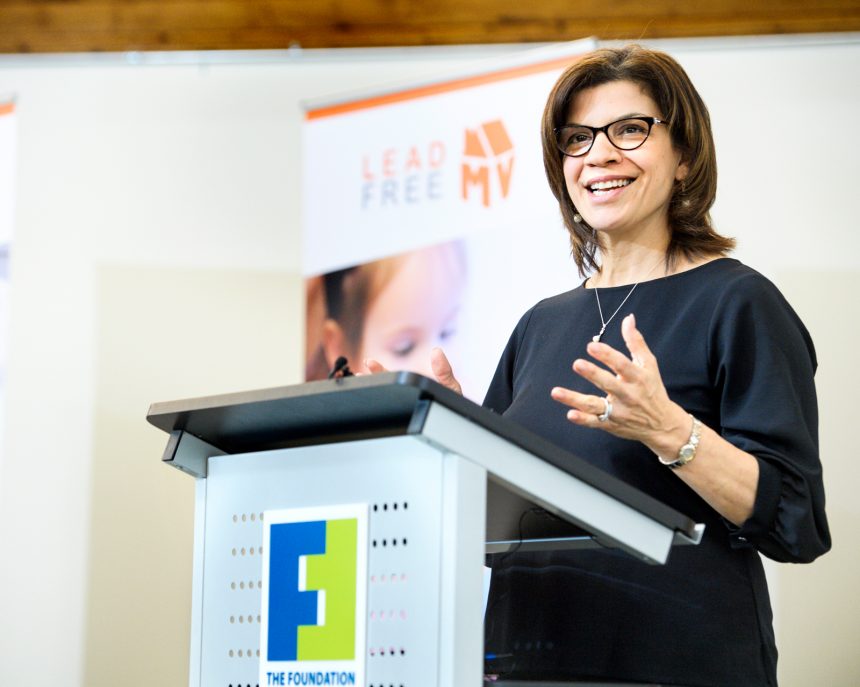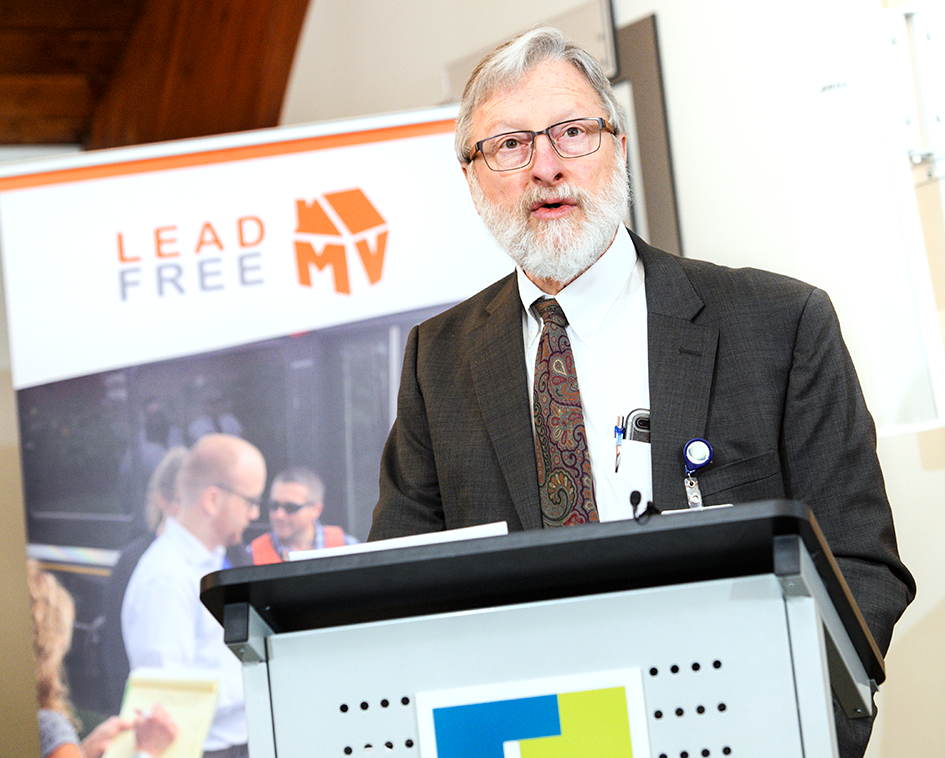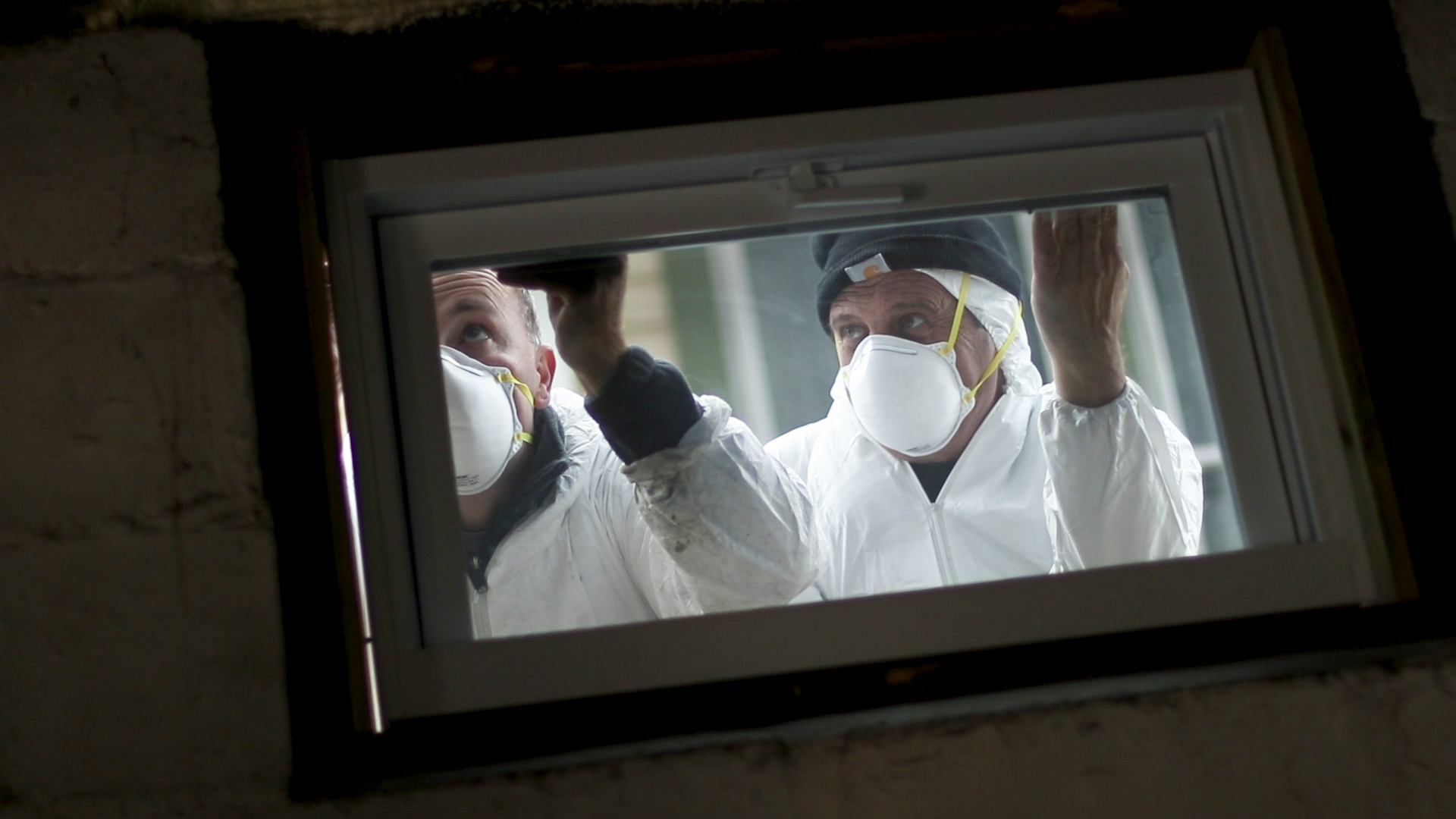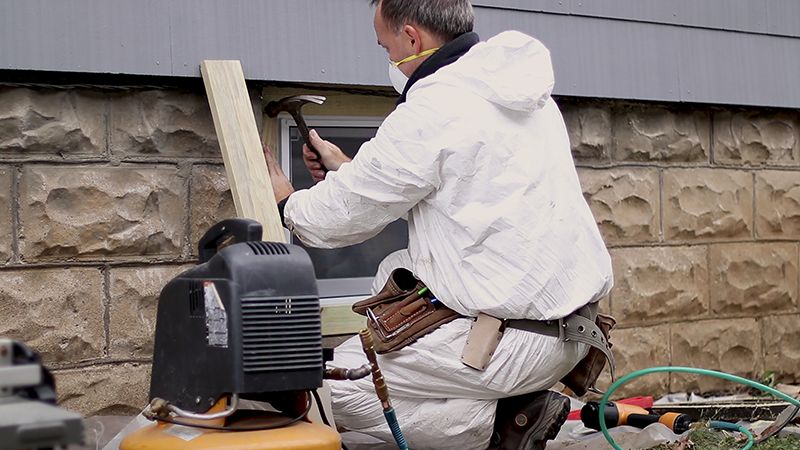
Community Foundation Announces $5 Million Investment in Lead-Free MV Initiative
The Community Foundation reaffirmed its commitment to reduce childhood lead poisoning announcing it will invest $5 million to support Lead-Free MV Coalition’s work.
The Community Foundation of Herkimer and Oneida Counties reaffirmed its commitment to reduce childhood lead poisoning yesterday, announcing it will invest $5 million to support Lead-Free MV Coalition’s work over the next decade. Community Foundation President and CEO Alicia Dicks made the announcement at an event marking the second anniversary of the coalition’s inception.The Community Foundation of Herkimer and Oneida Counties reaffirmed its commitment to reduce childhood lead poisoning yesterday, announcing it will invest $5 million to support Lead-Free MV Coalition’s work over the next decade. Community Foundation President and CEO Alicia Dicks made the announcement at an event marking the second anniversary of the coalition’s inception.
“As The Community Foundation’s single largest investment, we are making an unprecedented step forward in fulfilling our role as a community leader and change agent,” said Dicks.
The investment builds on The Community Foundation’s initial commitment of $1 million in January 2016 to launch a coalition that addressed childhood lead poisoning in Oneida and Herkimer counties.
“The coalition model has proven successful because it brings together a wide variety of agencies and efforts, helping to create more impactful partnerships,” said Dicks. “As a collective, we’ve been able to leverage the effectiveness of our partners’ current strategies and identify opportunities that will allow for even greater outcomes. Lead-Free MV’s work really has just begun.”
With over 100 members representing nearly 50 local organizations and agencies, the Lead-Free MV Coalition includes representatives from public health, local government, legal, insurance, healthcare, education, child care, construction and support services constituencies. The coalition meets regularly and focuses on the reduction of lead hazards in pre-1978 housing, as well as expanding testing and community awareness of the problem.
The Community Foundation’s investment will be used to leverage additional funding, and scale prevention and remediation efforts to protect a larger number of at-risk children.
“Childhood lead poisoning is an issue that’s deeply entrenched in our community and many other communities around the country,” said Dr. Mark Warfel, Lead-Free MV Coalition chair. “This is a problem that manifested itself over decades and will take an equal amount of time, if not more, to remedy.”
In recent years, Oneida County has had one of the highest levels of childhood lead poisoning in the state. And despite a state law requiring early childhood testing for lead exposure, a third of pre-school children in Herkimer and Oneida counties have not had the required blood test.
Since launching in 2016, coalition efforts to address childhood lead poisoning have included:
- Launching the West Utica Healthy Housing Pilot Program to address lead-related health hazards in a select number of homes in West Utica, a neighborhood prone to higher levels of childhood lead poisoning. The pilot seeks to demonstrate the effectiveness of multiple local agencies working collectively to streamline the home hazard remediation process. Partner agencies include the HomeOwnershipCenter, Mohawk Valley Community Action Agency, the City of Utica, Rust to Green Urban Studio, Cornell Cooperative Extension of Oneida County, and the Oneida County Health Department.
- Placing LeadCare II blood lead level testing systems in clinics and physician offices through a two-year, $50,000 Community and Member Health Improvement (CAMHI) grant from Excellus BlueCross BlueShield awarded to coalition partner Herkimer County HealthNet. Point-of-care testing makes it easier for parents to have their children’s blood lead level tested compared to traditional intravenous methods.
- Conducting multiple lead-related workshops, trainings and convenings with state and federal partners, including the Department of Housing and Urban Development (HUD), Environmental Protection Agency (EPA), New York State Department of Health (NYSDOH), New York State Homes and Community Renewal (HCR).




